Bi-moto Scorpius - 2000
T he brief could not have been simpler: to design a four-wheeled machine for the 2000 Geneva Motor Show that could deliver the same sensations as a motorcycle. There are cars that more or less meet these criteria, but none has pushed realism as far as the students at Espace Sbarro.
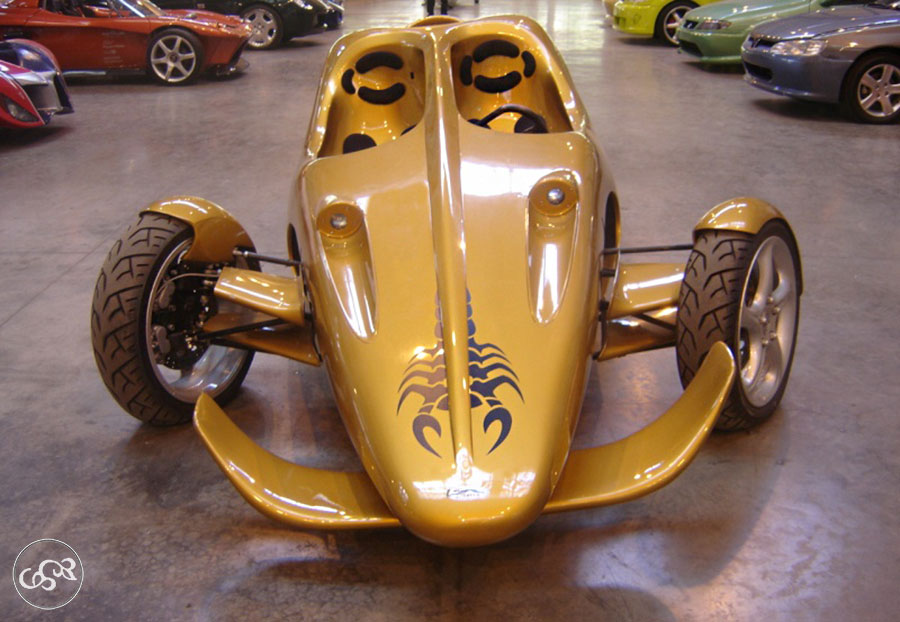
Leaning
The concept is not unprecedented, but few automakers have taken up this principle. In 1997, Mercedes brought out a prototype, the F300 Life Jet, whose body and wheels also leaned in the direction of curves. In 2006, a Dutch company presented the Carver One, which is marketed today in an electric version, and which tilts up to 45°.
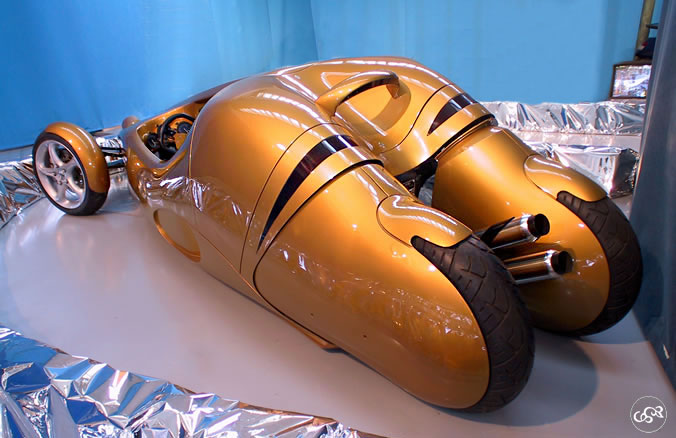
Double engine
The comparison with two-wheelers doesn't stop there: the entire mechanical part is borrowed directly from... two Yamaha models. There are two 1000 cm3 four-cylinder engines, for a total of eight cylinders, 2 liters and 260 hp. When you know that the machine weighs just 500 kg, you'll understand what sensations mean! The five-speed gearbox, also taken from the world of motorcycling, is sequential, allowing faster gear changes than a conventional gearbox.
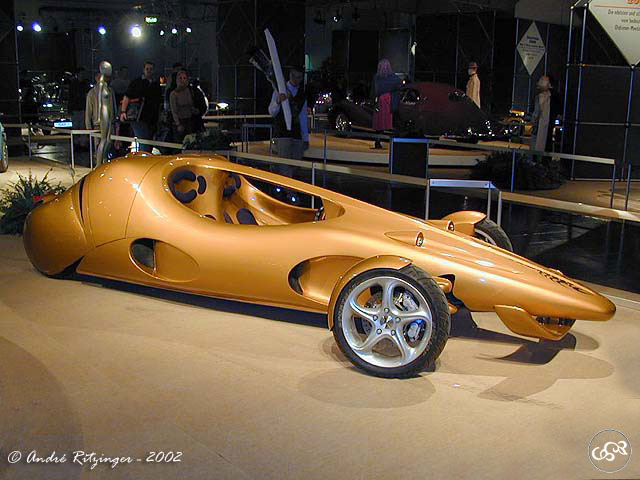
Wire and polyester
The body was built using a method perfected by Franco Sbarro: a wire structure then covered with polyester. Until now, Sbarro's students had a mold made from a model at Chausson in Reims. But this technique, although very efficient, was too expensive. Hence the idea of reverting to the well-established method used by Franco Sbarro from the outset.
One might have expected to find handlebars in the Bi-moto, but Sbarro's students opted for a steering wheel.
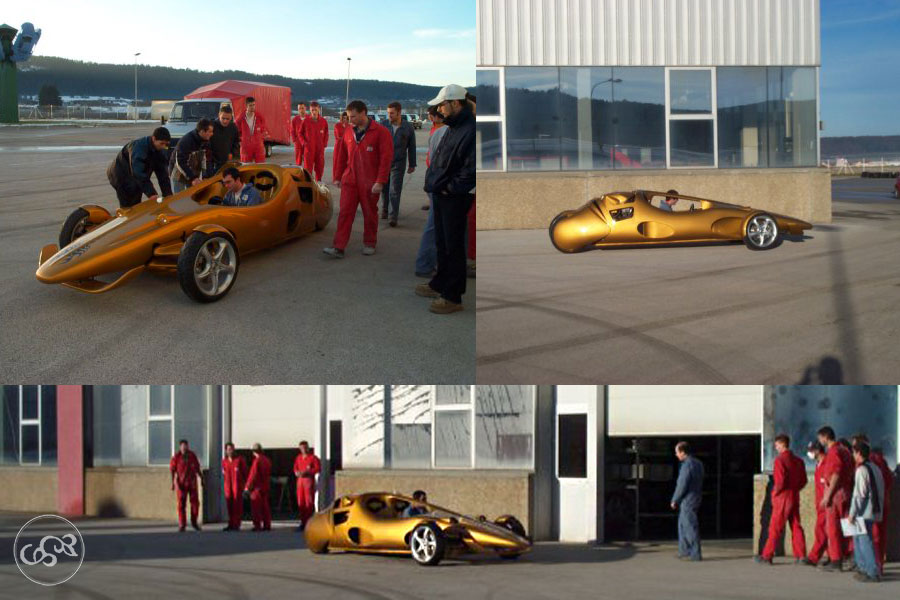
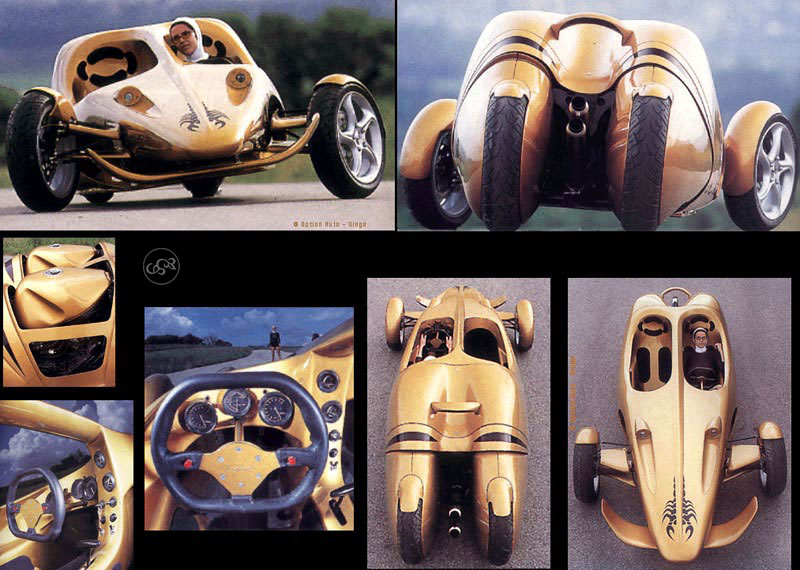
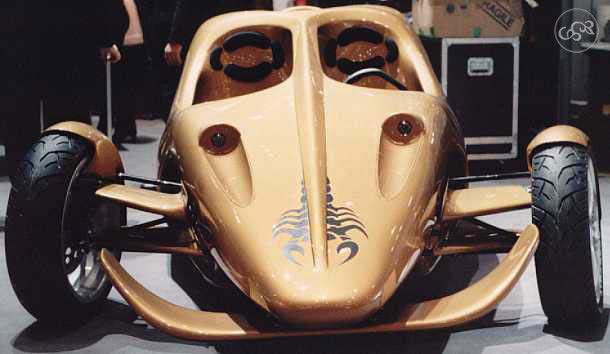
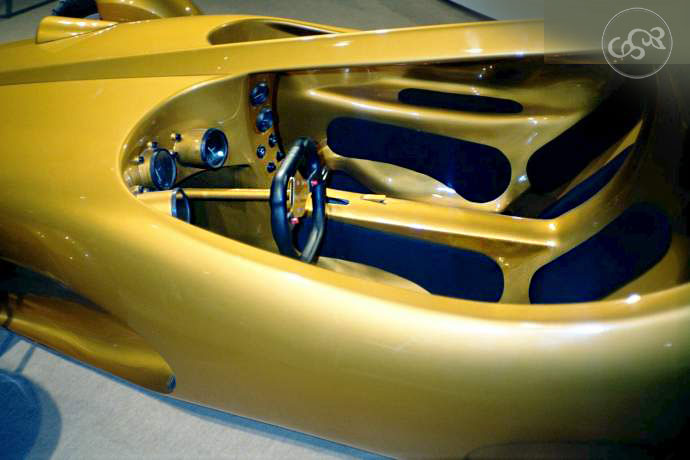

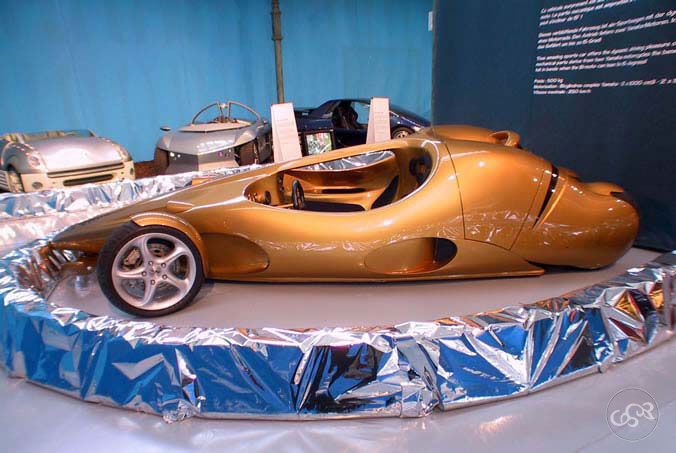
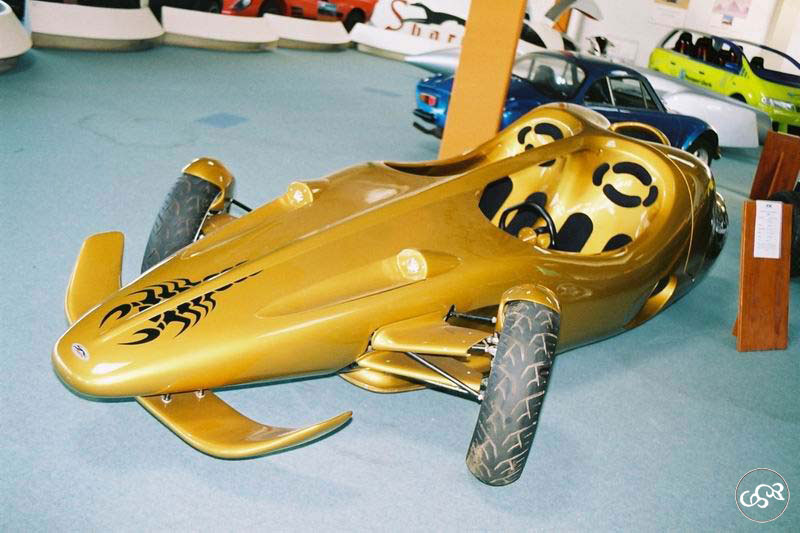
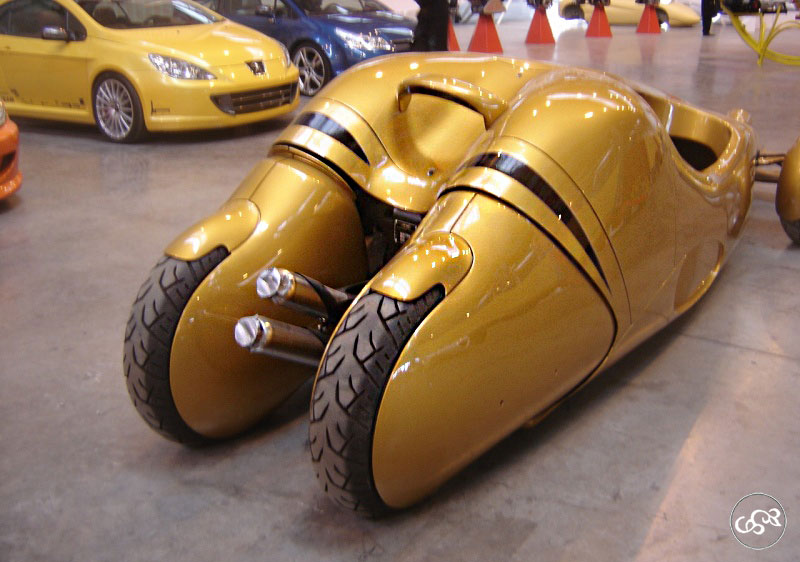
In brief
1- Front wheels tilt up to 15° when cornering
2- Two Yamaha motorcycle engines
3- Half motorcycle, half car